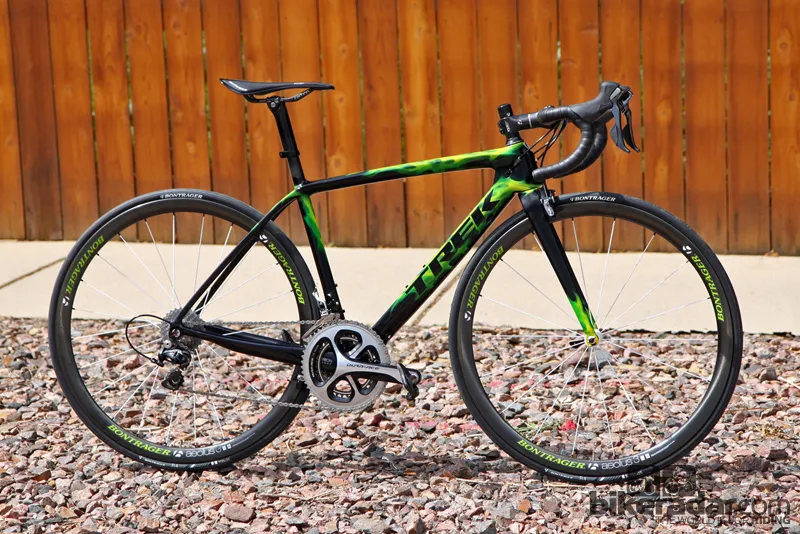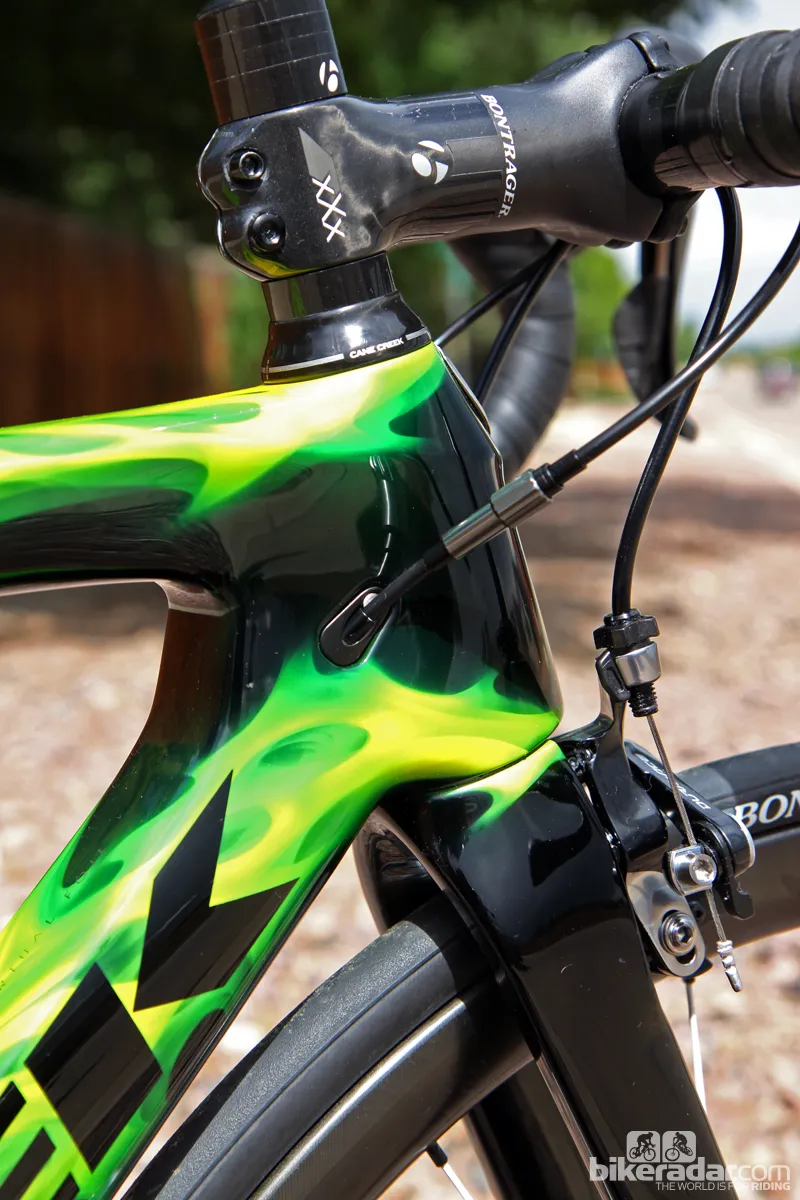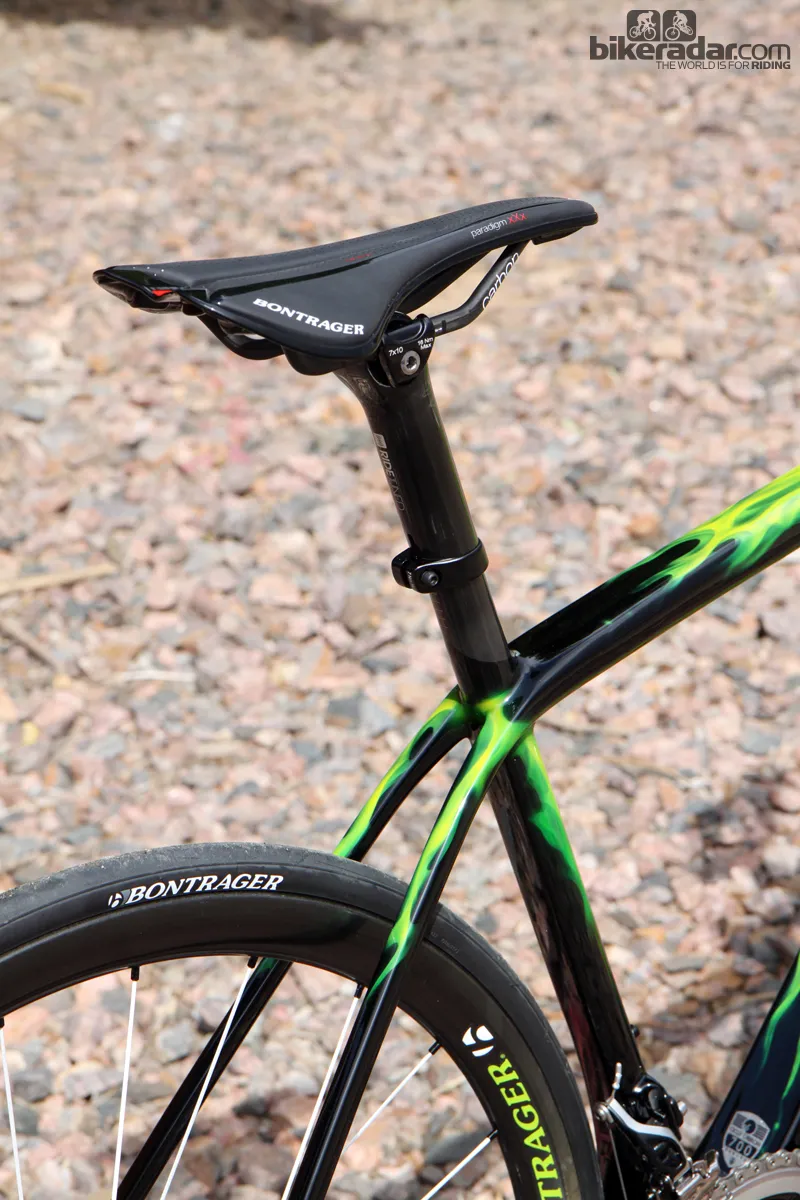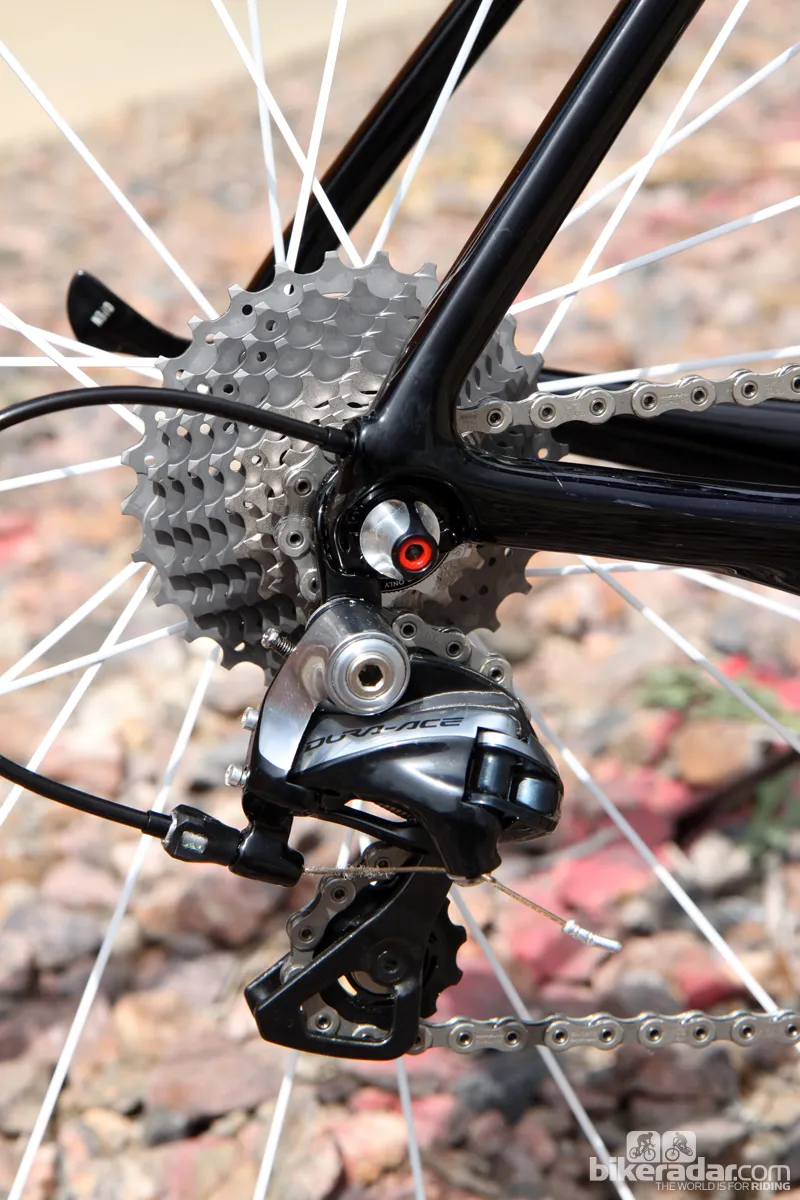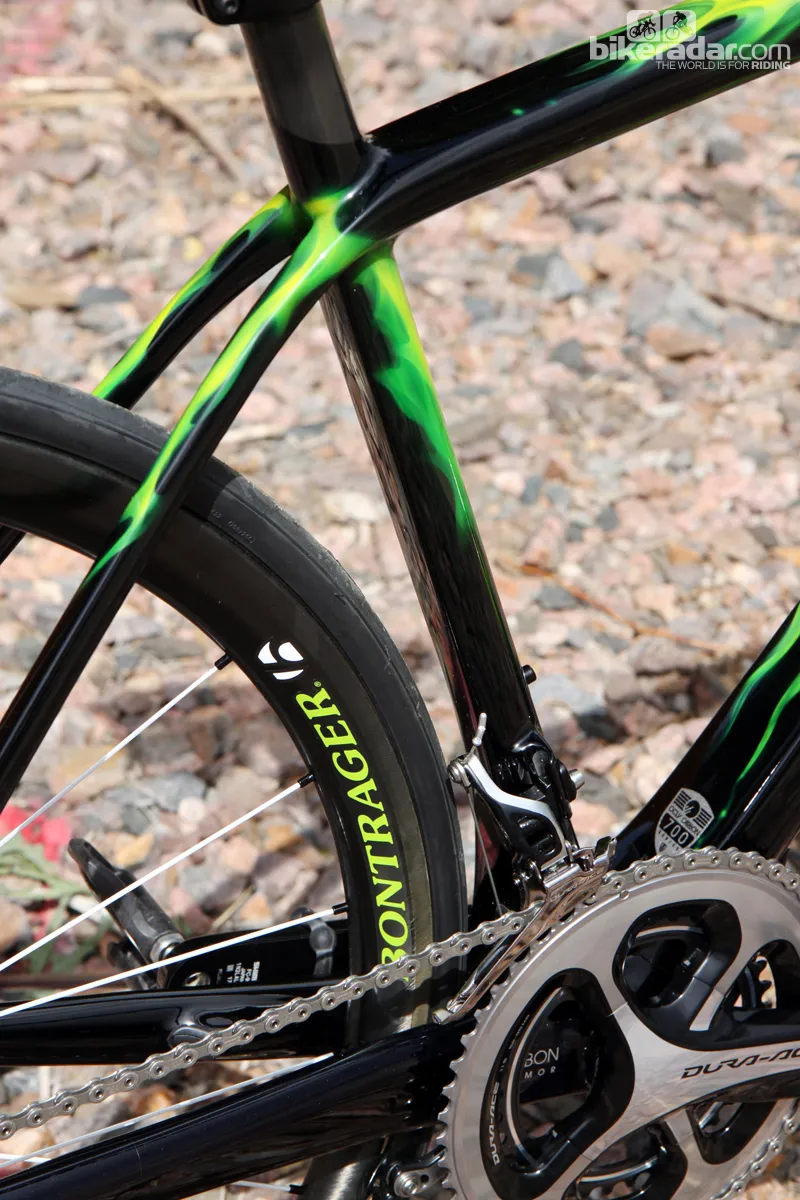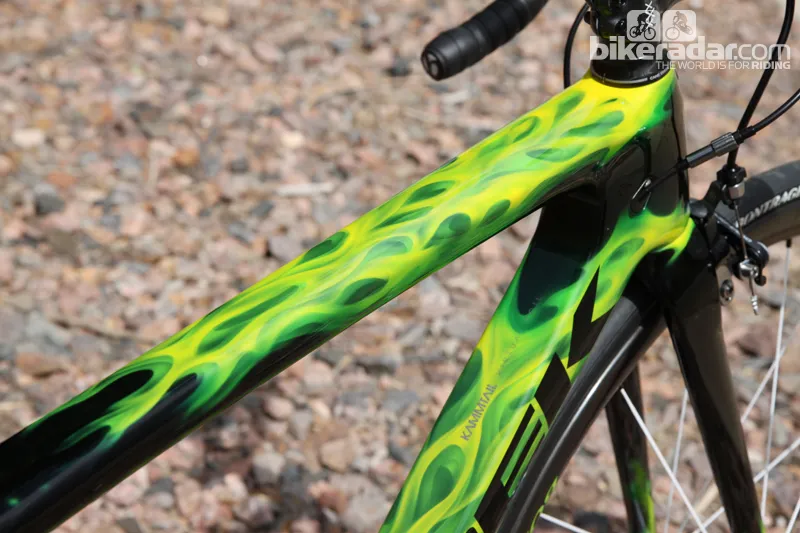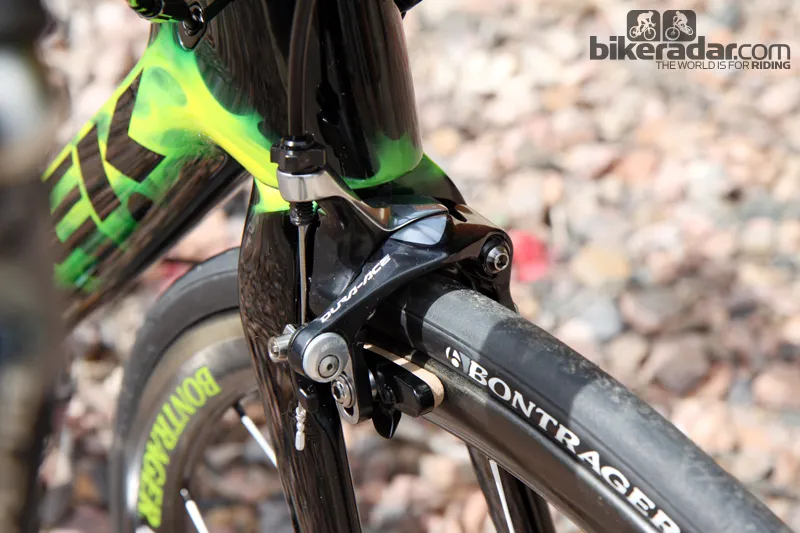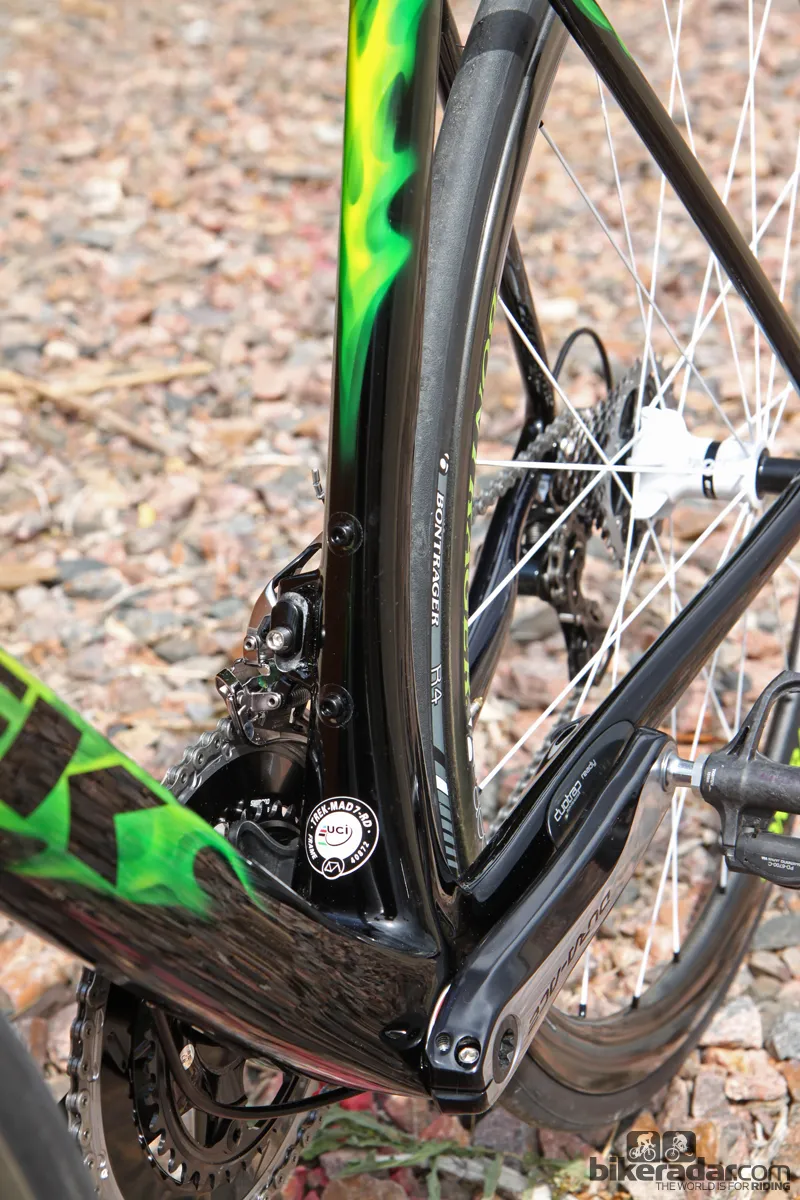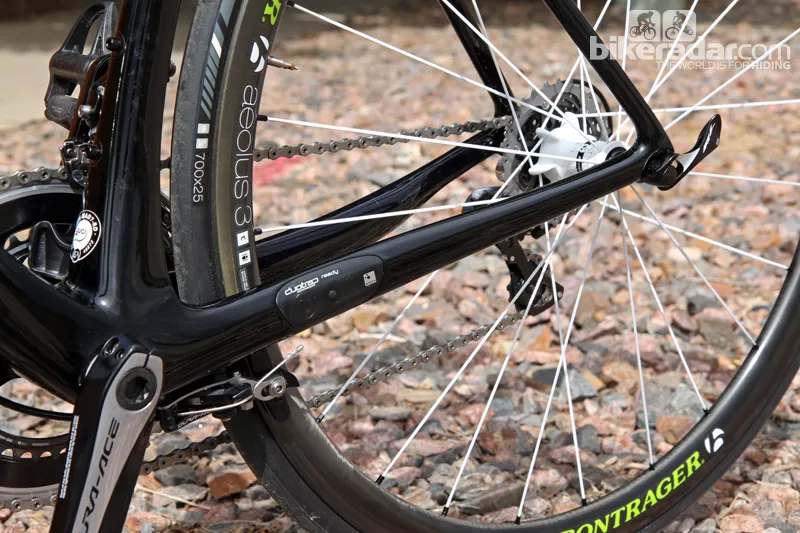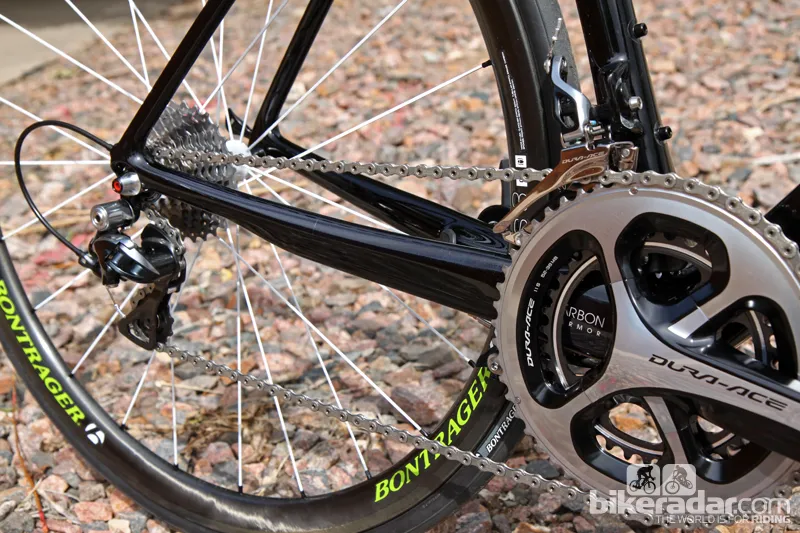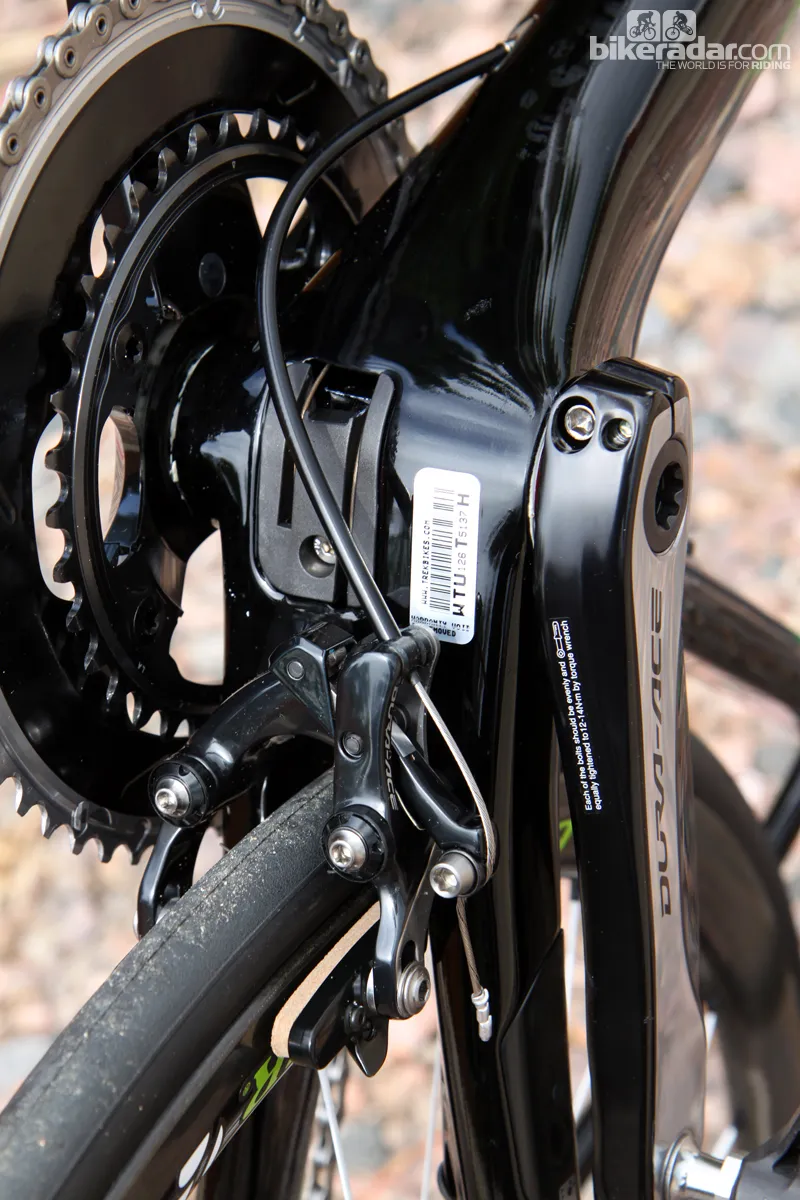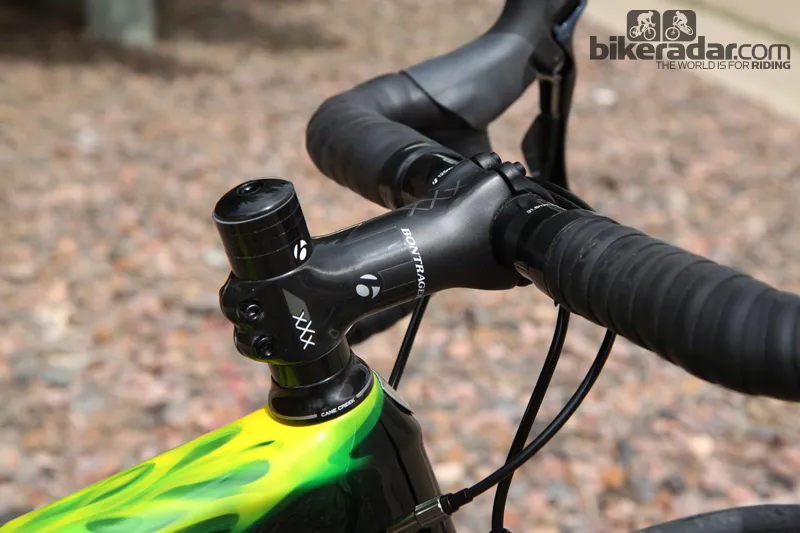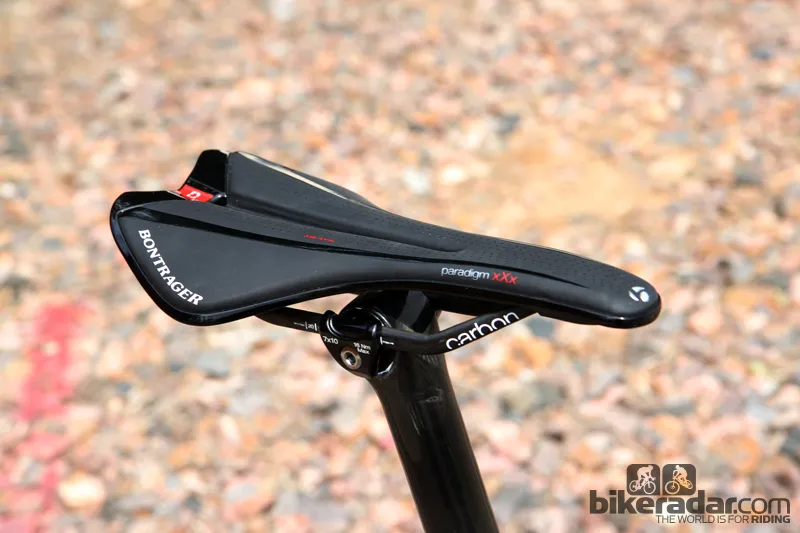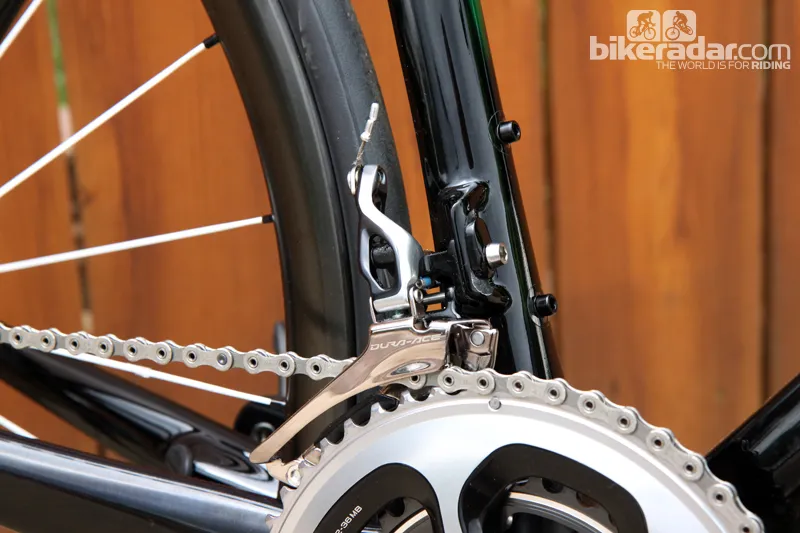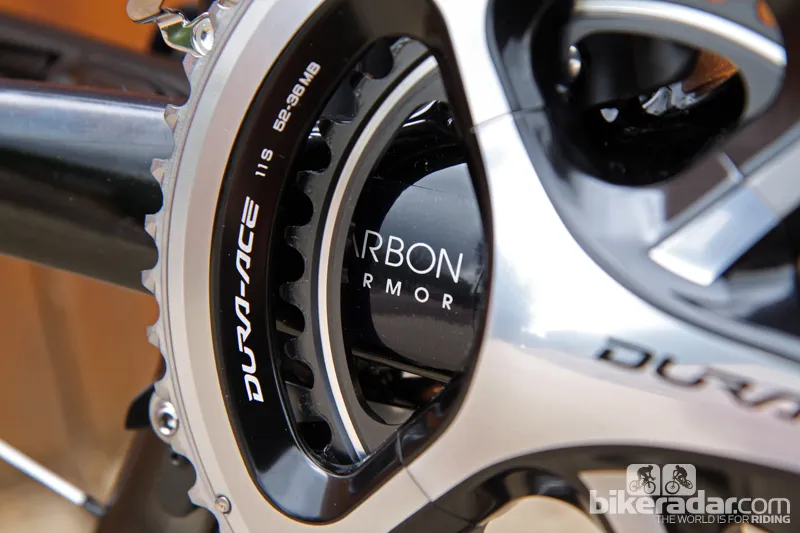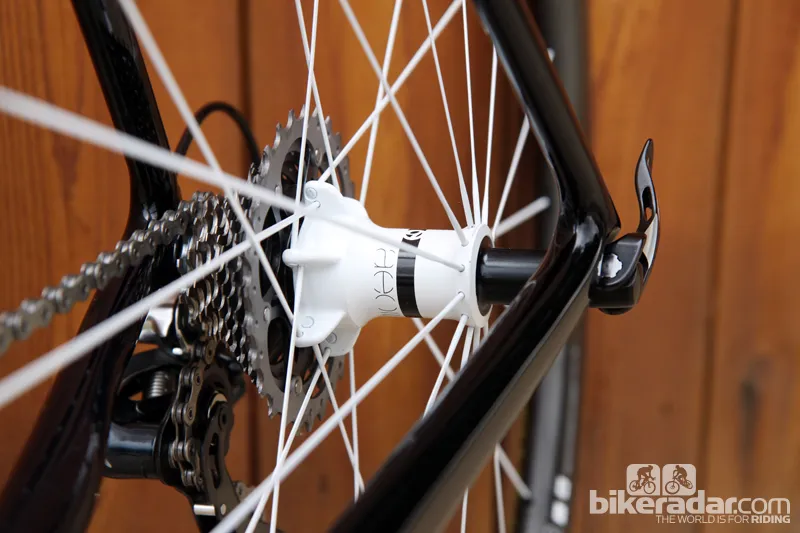We shared our first impressions of Trek's revamped 2014 Madone 7-Series Project One road racing flagship back in July and were generally quite happy with the experience. As always, the handling manners were impeccable, it was fairly comfortable and suitably quick under power – all while supposedly offering greatly improved aerodynamic performance over a round-tubed bike.
Several months later, our initial opinions haven't changed - if anything, they've only been reinforced. The latest Madone is Trek's best in many ways but the controversial rear brake placement hasn't won us over.
- Highs: Fantastic geometry, spot-on rider positioning, good ride quality, admirably efficient
- Lows: Awkward rear brake position, rear wheel pad rub, out-of-spec fork tip
Ride and handling: telepathic handling, unflappably predictable
Our Madone reviews are starting to sound like broken records when it comes to describing the handling but given that it's so perennially exceptional, that's hardly a bad thing. When it comes to neutral handing, this really is the quintessential sweet spot between stability and agility. Calm high-speed manners inspire supreme confidence when bombing descents and yet the Madone is still amply quick to turn in when the corners start coming fast and furious. Simply lean it over, set an edge and rail through – often with no need to hit the brakes either.
Fit and rider positioning is still spot-on as well. We went with the more aggressive H1 geometry here with its lower front end and longer top tube, and found it just right when going hard. We've sampled the slightly more relaxed H2 version too, and found it provided a noticeably more upright ride but without compromising the superb handling.
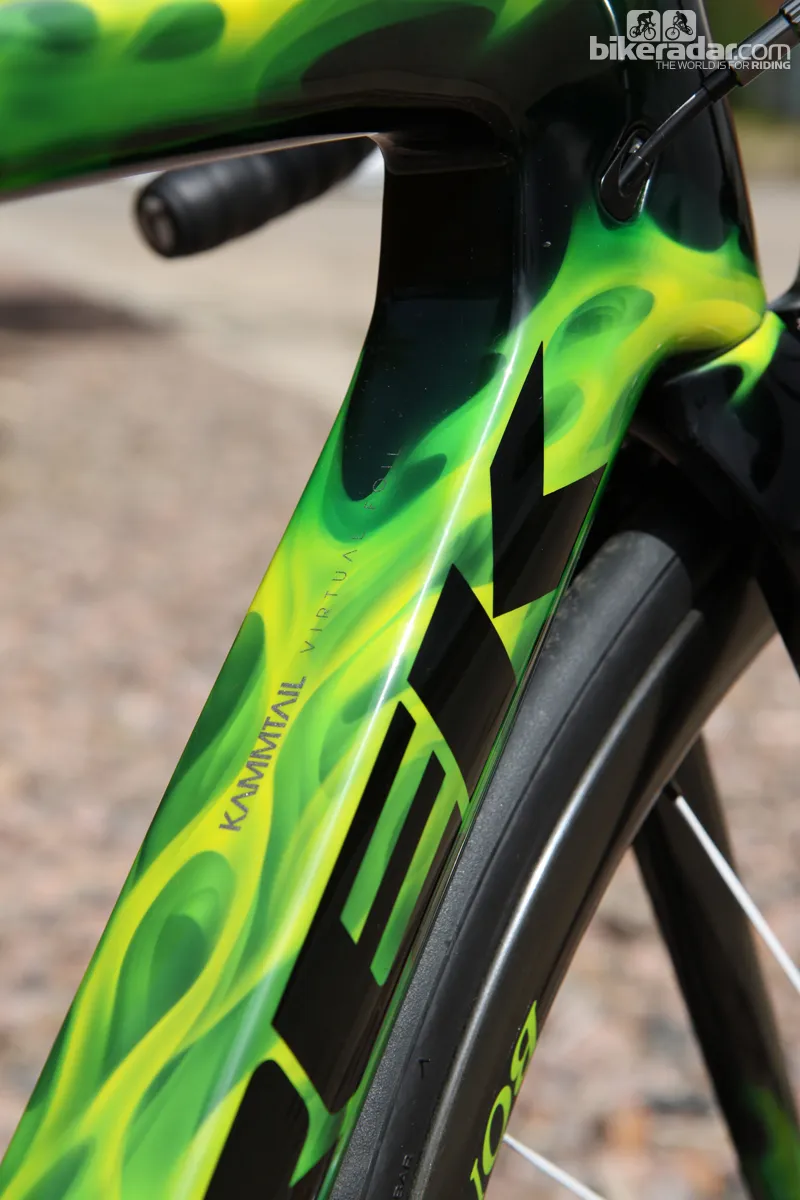
The H1 geometry has lower front end and longer top tube than the more relaxed G2 geometry
As claimed, ride quality has improved over last year's version. It's a subtle change that many might not even notice, however, and we still wouldn't characterize the latest Madone's feel as pillowy smooth. It's exceptionally well damped and glides across good road surfaces without feeling overly isolating but neither end gives much on bumps of any size.
That being said, it rides quite well for a top-end machine whose primary intent is racing, particularly compared to other aero road machines that can sometimes be downright harsh. At least on the generally good roads we used during testing, the Madone is an easy machine to ride all day.
Overall stiffness is what we've come to expect from the Madone. Excellent front triangle rigidity lends extra precision and confidence to the handling traits, plus it makes for a solid feel when muscling the bars during out-of-the-saddle sprints and climbs. Rear end stiffness can't quite keep up with the front end but it's very good nonetheless and contributes to a generally sprightly and eager feel overall.
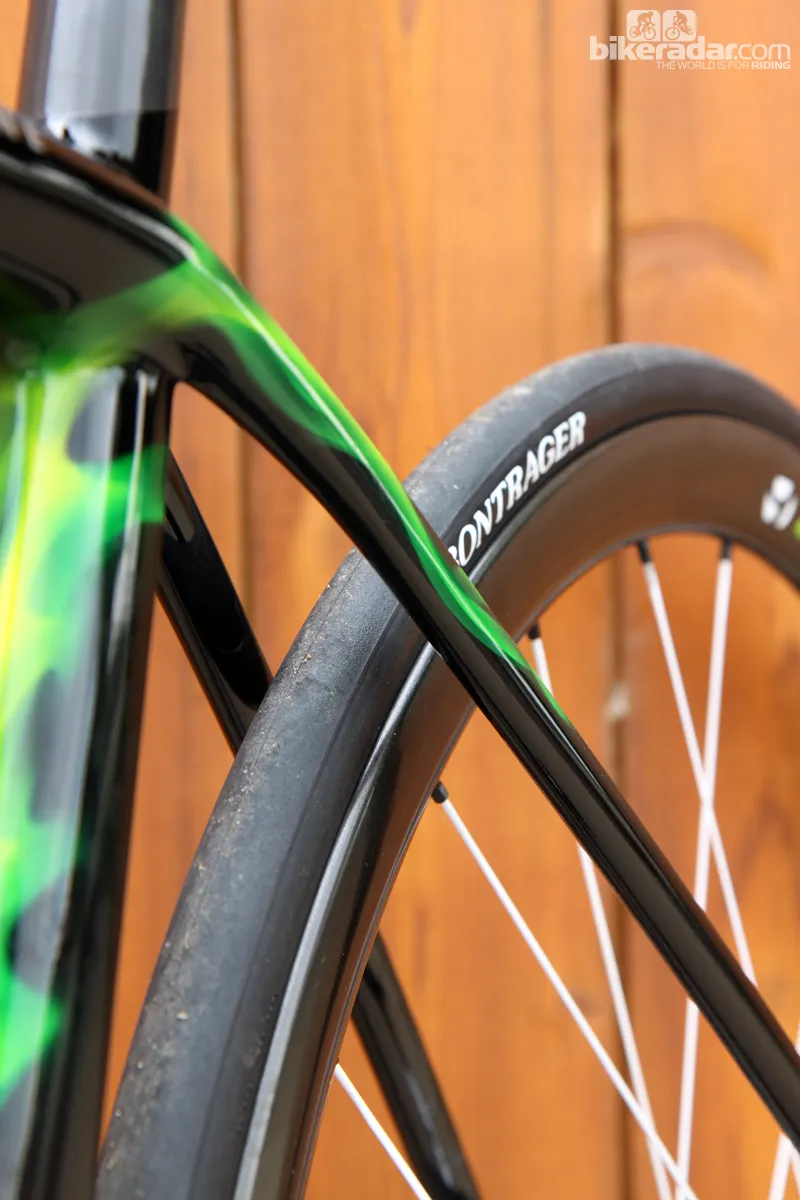
The custom spec included Bontrager Aeolus 3 D3 carbon clincher wheels
And have we mentioned yet that the new Madone is also light? Our complete test sample came with a custom Project One spec that includes a Shimano Dura-Ace 9000 mechanical group, Bontrager Aeolus 3 D3 carbon clinchers, and carbon fiber Bontrager finishing kit. The total weight for a 52cm size without pedals is a wispy 6.32kg (13.93lb). Actual weight of our 52cm frame is similarly svelte at 840g (with rear derailleur hanger and bolt-on housing stops) and the matching fork adds just 340g (195mm steerer, no plug).
Trek even claims some impressive aerodynamic savings over the previous round-tubed Madone: 25 watts at 40km/h, or about two minutes per hour.
So the latest Madone is stout under power, handles supremely well, reasonably comfortable, very light, more aerodynamic than before and puts its rider in a perfect position. What's not to like?
Unfortunately, it's that pesky rear brake.
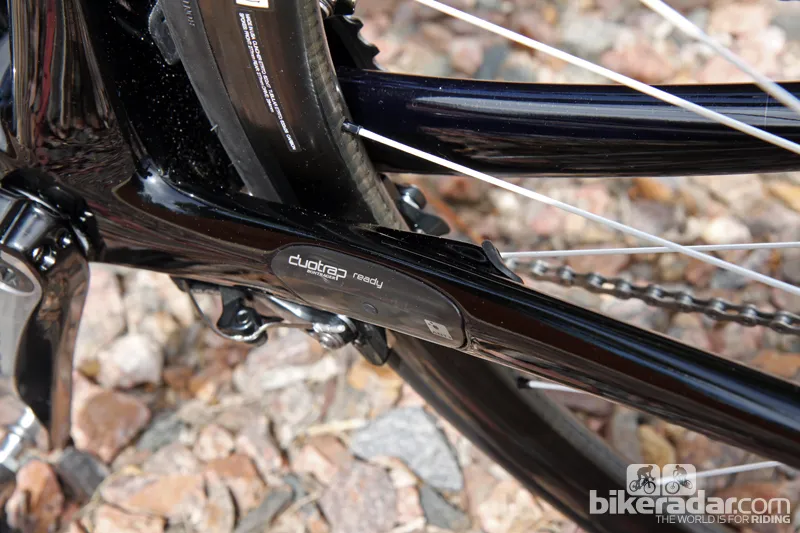
Trek believes putting the rear brake caliper under the chain stays has multiple benefits. We're not convinced
Trek says the relocation of the rear caliper beneath the chain stays provides several benefits. For one, the chain stays are far bigger and stiffer than the seat stays so in theory, they should make for a more solid foundation and increased braking power. Moving the brake down below also frees up designers to slim down the seat stays for improved ride comfort, plus it cleans up the shape for supposedly reduced aerodynamic drag.
Despite the bridgeless seat stay design and their relatively slim profile, the Madone isn't appreciably more comfortable than other top competitors. The down-below location is also prone to road spray and debris kicked off of the front wheel, plus it's a very awkward location for maintenance. And while we didn't notice any unusual brake rub during our first few rides during the summer, we ultimately got several different wheelsets (including the stock Bontrager ones) to consistently contact the pads under hard efforts, even with relatively generous pad rim clearances.
The revamped brake location may very well over some measurable benefits but even so, we remain unconvinced that they outweigh the real-world drawbacks.

Putting the brake calipers here leaves them open to road spray and debris
Frame: lightweight with proven OCLV construction
The Madone may not fit the mold of what many expect to see in a supposedly aerodynamic road bike but that's due to its Kamm tail design. Instead of complete airfoil sections, the Madone instead uses clipped profiles that are said to offer similar aerodynamic benefits while still maintaining more traditional aspect ratios for good stiffness and ride qualities – both of which the Madone has in good quantities.
As is the trend with most modern carbon road frames these days, there are no abrupt profile changes, overly sharp edges or wacky shapes built into the design. Instead, Trek has maintained a more engineering-centric philosophy with gentle transitions throughout. Also present are the company's long-standing Madone frame features, such as the extra-wide BB90 bottom bracket shell with drop-in bearings, correspondingly wide down tube and chain stay spacing, a tapered 1 1/8 to 1 1/2in head tube (again, with bearing seats molded directly into the structure to save weight), and an integrated no-cut seatmast topped by a Bontrager molded carbon fiber head.
Other niceties include a built-in chain catcher, the Duotrap integrated optional wireless speed and cadence sensor, carbon fork tips and rear dropouts, and internal cable routing that's convertible for mechanical or electronic drivetrains. None of the internal paths are fully guided but even so, we found servicing to be a pretty straightforward process as long as you're careful to first run a section of housing through before pulling out the old inner wires. More importantly, the paths are straight and direct so there's no penalty in friction as compared to an external setup.
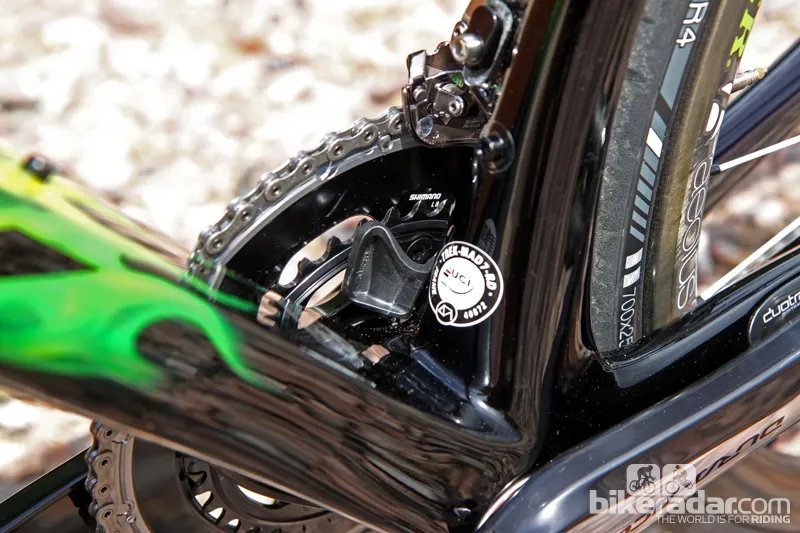
The built-in chain catcher is a nice touch
We did encounter one unfortunate manufacturing related hiccup during our time with the Madone: a fork tip that was a touch too long, which kicked the front wheel off-axis if we pulled the axle completely in – not a lot, mind you, but enough that we noticed. We ended up having to ship our test bike back to Trek, where 0.5mm was ground off of one dropout to correct the misalignment. All was good afterward but this is not exactly what you want to see on a bike costing upward of US$10,000.
Equipment: flawless Shimano Dura-Ace 9000 group and fantastic Bontrager bits
Whatever gripes we can air on the rear brake position and fork tip alignment, we have nothing but positive things to say in regards to the new Shimano Dura-Ace 9000 group. It's utterly brilliant in every way that matters and corrects every mis-step of the previous 7900 package.
Shift quality is superb, with smooth and dependable changes under full power – especially up front, which is still best in class. Lever action is light, enviably precise, and silky smooth, plus Shimano has given back the ability to downshift three rear gears in a sweep. Lever ergonomics are also fantastic, with a smooth shape that falls naturally in your hands and a reach adjustment that's usable without detracting from the keen aesthetics.
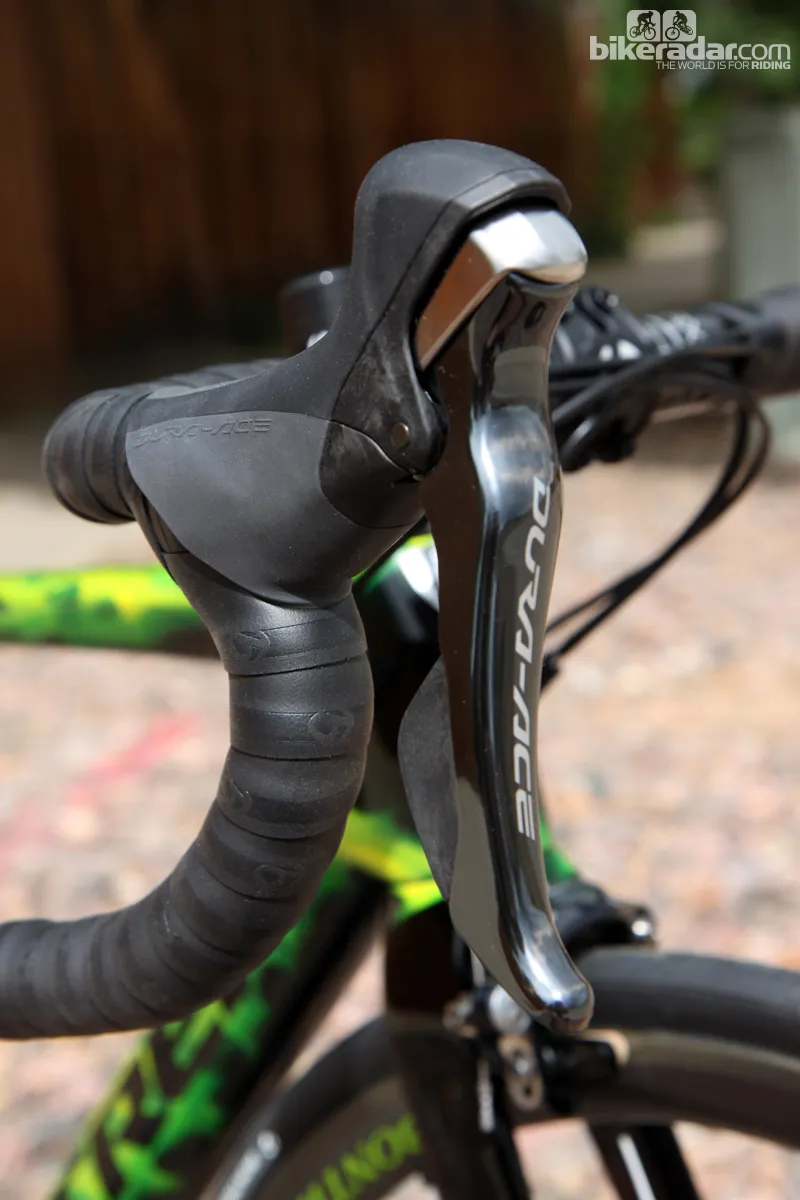
The Shimano Dura-Ace 9000 group provides superbly smooth shifting
Despite the unusual rear caliper placement and uncommon direct mount fitment, brake performance is excellent with ample power, a solid-feeling lever, and good control – provided you take the time to resurface the stock carbon-specific Bontrager cork pads. The rear quick-release that's built into the head tube stop is a little awkward to use during a wheel change but thankfully, we never really had to since the Bontrager Aeolus 3 D3 rims are roughly the same width as the 25mm tires we used primarily during testing.
We had excellent luck overall with Bontrager's latest 35mm-deep carbon clinchers, which are admirably rigid, lightweight, reasonably stable in crosswinds, and seemingly durable thanks in part to well proven DT Swiss star ratchet rear hub internals. Tubeless compatibility would be the icing on the cake but in fairness, it's still a rarity in the road world.
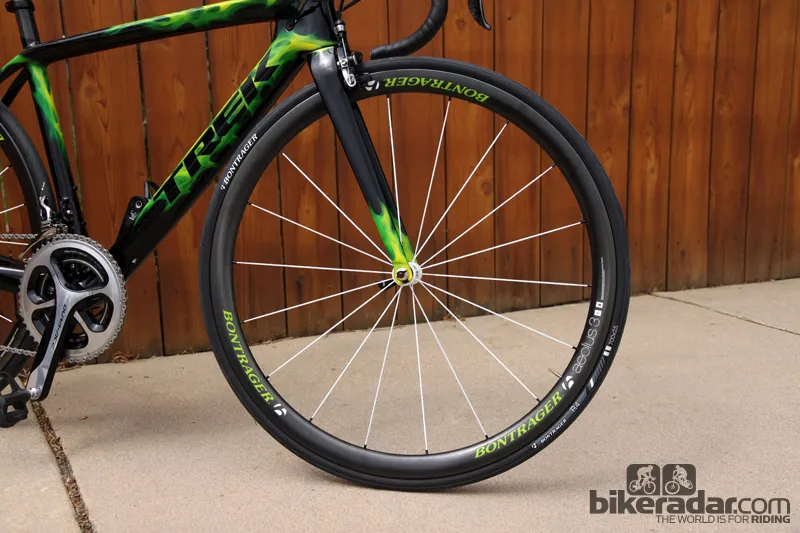
We have plenty of praise for the rest of Bontrager finishing kit too. The Race X Lite IsoZone carbon handlebar does a fantastic job of sucking of road buzz and the matching carbon stem is impressively solid. Despite the minimal padding, the Paradigm XXX Carbon saddle is nevertheless comfortable and supportive for long days on the road too, thanks to its smart shape and generous central cutout.
BikeRadar says: "Overall, the latest Madone faithfully carries forward the range's hallmarks of brilliant handling, spot-on rider positioning, very good stiffness and good ride quality. Aero shaping and continuing weight losses only further improve the stock. However, the unusual rear brake position and the associated inconveniences mar what is otherwise a great bike."
Complete bike specifications
- Frame: Trek Madone 7-Series Project One
- Fork: Trek Madone KVF full carbon
- Headset: Cane Creek IS8, 1 1/8-to-1 1/2in tapered
- Stem: Bontrager Race XXX Lite
- Handlebars: Bontrager Race X Lite IsoZone
- Tape/grips: Bontrager Gel Grip
- Front brake: Shimano Dura-Ace BR-9000 w/ Bontrager carbon-specific cork pads
- Rear brake: Shimano Dura-Ace BR-9000 w/ Bontrager carbon-specific cork pads
- Brake levers: Shimano Dura-Ace STI Dual Control ST-9000
- Front derailleur: Shimano Dura-Ace FD-9000
- Rear derailleur: Shimano Dura-Ace RD-9000
- Shift levers: Shimano Dura-Ace STI Dual Control ST-9000
- Cassette: Shimano Dura-Ace CS-9000
- Chain: Shimano Dura-Ace CN-9000
- Crankset: Shimano Dura-Ace FC-9000
- Bottom bracket: Trek BB90 integrated
- Pedals: n/a
- Wheelset: Bontrager Aeolus 53 D3 clincher
- Front tire: Bontrager R4, 700x25c
- Rear tire: Bontrager R4, 700x25c
- Saddle: Bontrager Paradigm RXXXL
- Seatpost: Bontrager Ride Tuned Carbon seatmast
